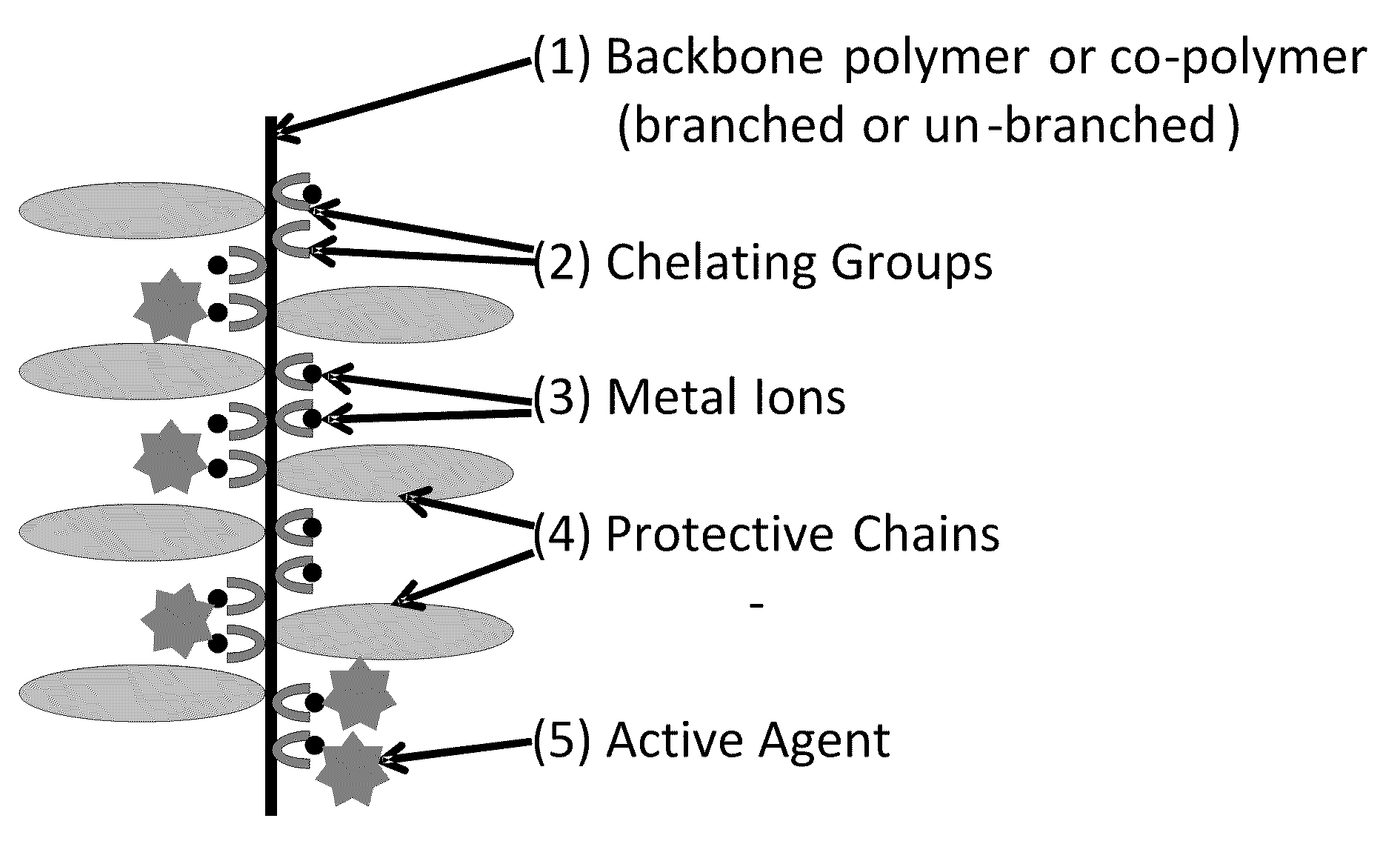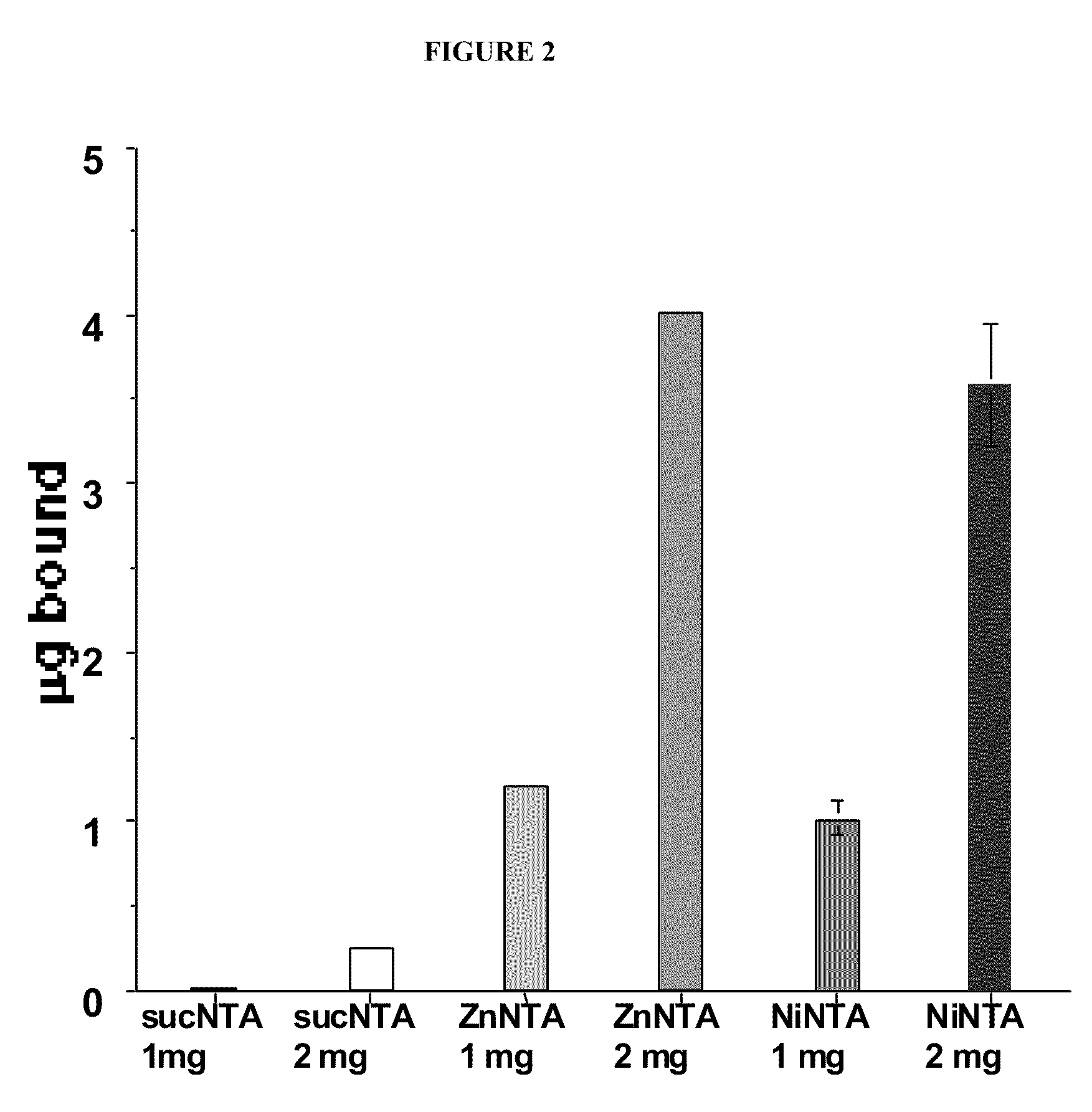Polymeric carrier compositions for delivery of active agents, methods of making and using the same
- Summary
- Abstract
- Description
- Claims
- Application Information
AI Technical Summary
Benefits of technology
Problems solved by technology
Method used
Image
Examples
example 1
[0125]Synthesis of PLPEG (lot#20020101): Poly-L-lysine, hydrobromide (Sigma, Mw=48000, d.p. 200), 1 g was dissolved in 175 ml of 0.1 M Na2CO3, pH 8.7. An aliquot of this solution was removed for amino groups determination by TNBS titration (final concentration of NH2-groups, 15 mM or 2.6 mmol total). Methoxy polyethylene glycol succinate (MPEGS9.6 g, 1.9 mmol) was dissolved in 25 ml of water, degassed, and N-hydroxy(sulfo)succinimide (500 mg, 2.3 mmol) was added, followed by 1 g, 5 mmol of EDC in 2 ml of water. This solution was incubated for 10 min at room temperature and added drop-wise to the solution of poly-1-lysine, final pH 7.7. The mixture was incubated for six hours. The product was purified using ultrafiltration on a cartridge with a cut-off of 100 kD (UFP-100 A / G Technology) to remove unconjugated MPEGS and other reactants.
example 2
[0126]Synthesis of PLPEGNTA: The product obtained as described in Example 1 (MPEGsuccinyl-poly-L-Lys (m.w. 340000)) was succinylated using 10-fold molar excess of succinic anhydride over the concentration of TNBS-reactive free aminogroups in the co-polymer in 0.5 M sodium carbonate pH 8.0, for 4 hours room temperature. Succinylated co-polymer (PLPEGSA) was purified using dialysis against water (lot#20020102).
[0127]100 mg Lyophilized PLPEGSA was dissolved in 2 ml water at 28 mol succinate / ml, treated with 30 mg ethyl-diaminopropyl carbodiimide (EDC) in the presence of 20 mg Sulfo-NHS for 10 min at room temperature. A solution of activated PLPEGSA was added to a 10 fold molar excess solution of N,N-Bis(carboxymethyl)-L-lysine Hydrate (BCMLys) in 1 ml sodium bicarbonate, pH 8.7. The final pH was adjusted to 7.6, incubated 24 hours at 4° C. The resultant product PLPEGNTA (lot#20020103) was purified using ultrafiltration on YM50 membrane (Amicon) by diluting to 100 ml and concentrating t...
example 3
[0128]Synthesis of PLPEGNTANi (lot#20020104): A solution of product PLPEGNTA was dialyzed against 1 L of 10 mM Ni acetate / 20 mM citric acid, pH 6 for 24 hours at 4° C. and purified by dialyzing against 2 L water (2 changes). Binding of Ni was measured by spectrophotometry at 625 nm using Ni-citrate as a standard.
PUM
| Property | Measurement | Unit |
|---|---|---|
| Mass | aaaaa | aaaaa |
| Mass | aaaaa | aaaaa |
| Mass | aaaaa | aaaaa |
Abstract
Description
Claims
Application Information
 Login to View More
Login to View More - R&D
- Intellectual Property
- Life Sciences
- Materials
- Tech Scout
- Unparalleled Data Quality
- Higher Quality Content
- 60% Fewer Hallucinations
Browse by: Latest US Patents, China's latest patents, Technical Efficacy Thesaurus, Application Domain, Technology Topic, Popular Technical Reports.
© 2025 PatSnap. All rights reserved.Legal|Privacy policy|Modern Slavery Act Transparency Statement|Sitemap|About US| Contact US: help@patsnap.com



